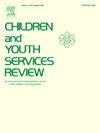艺术治疗治疗(ArAT)对儿童和青少年心理社会问题的感知效果
IF 1.7
2区 社会学
Q1 FAMILY STUDIES
引用次数: 0
摘要
目的心理社会问题在儿童和青少年中很常见,情绪调节似乎与心理社会问题的发展、维持和治疗有关。艺术疗法已被证明可以增强情绪调节,利用创造性表达和艺术创作作为交流。情感调节艺术治疗项目(ArAT)是跨学科开发的,在这里被应用于艺术治疗,以减少儿童和青少年的情感和情绪调节问题的心理社会问题。方法采用系统视角的多案例研究设计,对18名儿童及其网络成员进行心理社会问题评分。采用定量和定性相结合的方法对ArAT的效果进行了探讨。在基线、干预中期、干预后和六周的随访中,通过优势和困难问卷(SDQ)测量心理社会问题,并针对七个确定的问题行为进行额外的每周测量。定性数据分析使用演绎主题内容分析,以确定感知的变化,并探讨可能的影响因素。结果在所有参与者中,随着时间的推移,大多数孩子表现出进步,尤其是在内化问题上。个性化的问题清单显示几乎所有的孩子都有积极的变化。定性数据反映了反复出现的注意力、自主性和恢复力增强的模式。结论在定量和定性结果的支持下,ArAT干预在减少社会心理问题方面显示出良好的效果。其个性化的方法促进了社会心理问题行为和相关领域的积极变化,强调了不同发展阶段的疗效。本研究强调了包容性政策、教育一体化和协作努力对取得成功的重要性。未来的研究应侧重于复制、同质诊断组、纵向评估和干预机制,以全面了解有效性和可持续性。本文章由计算机程序翻译,如有差异,请以英文原文为准。
Perceived effects of an art therapeutic treatment (ArAT) for children and adolescents with psychosocial problems
Objective
Psychosocial problems are common among children and adolescents, and emotion regulation appears relevant in developing, maintaining, and treating them. Art therapy has been shown to enhance emotion regulation, utilizing creative expression and artmaking as communication. The affect-regulating Arts Therapy program (ArAT), developed across disciplines, was here applied in art therapy to reduce psychosocial problems in children and adolescents with affect- and emotion-regulation problems.
Method
In a multiple case study design with a systemic perspective, 18 children and their network members rated psychosocial problems. Quantitative and qualitative methods were applied to explore the effect of ArAT. Psychosocial problems were measured by the Strengths and Difficulties Questionnaire (SDQ) at baseline, mid-intervention, post-intervention, and at six-week follow-up, with additional weekly measurements targeting seven identified problematic behaviors. Qualitative data were analyzed using deductive thematic content analysis to identify perceived changes and to explore possible contributing factors.
Results
Across participants, most children showed improvement over time, particularly on internalizing problems. The personalized problem list demonstrated positive change in nearly all children. Qualitative data reflected recurring patterns of enhanced attention, autonomy, and resilience.
Conclusion
The ArAT intervention demonstrates promising results in reducing psychosocial problems, supported by quantitative and qualitative results. Its personalized approach fosters positive changes in psychosocial problem behavior and related areas, emphasizing efficacy across diverse developmental phases. This study highlights the importance of inclusive policies, educational integration, and collaborative effort in achieving success. Future research should focus on replication, homogeneous diagnostic groups, longitudinal assessments, and intervention mechanisms to comprehensively understand effectiveness and sustainability.
求助全文
通过发布文献求助,成功后即可免费获取论文全文。
去求助
来源期刊

Children and Youth Services Review
Multiple-
CiteScore
6.30
自引率
6.10%
发文量
303
期刊介绍:
Children and Youth Services Review is an interdisciplinary forum for critical scholarship regarding service programs for children and youth. The journal will publish full-length articles, current research and policy notes, and book reviews.
 求助内容:
求助内容: 应助结果提醒方式:
应助结果提醒方式:


